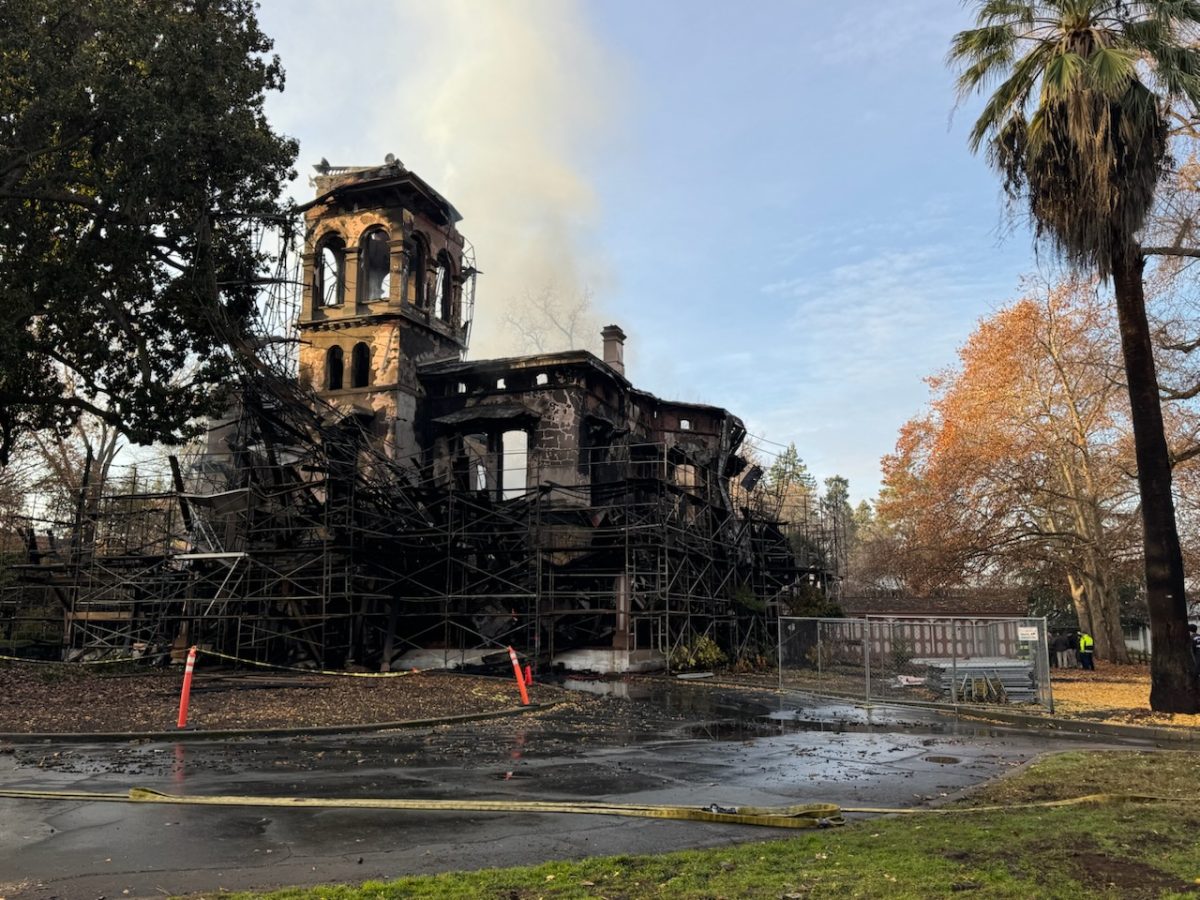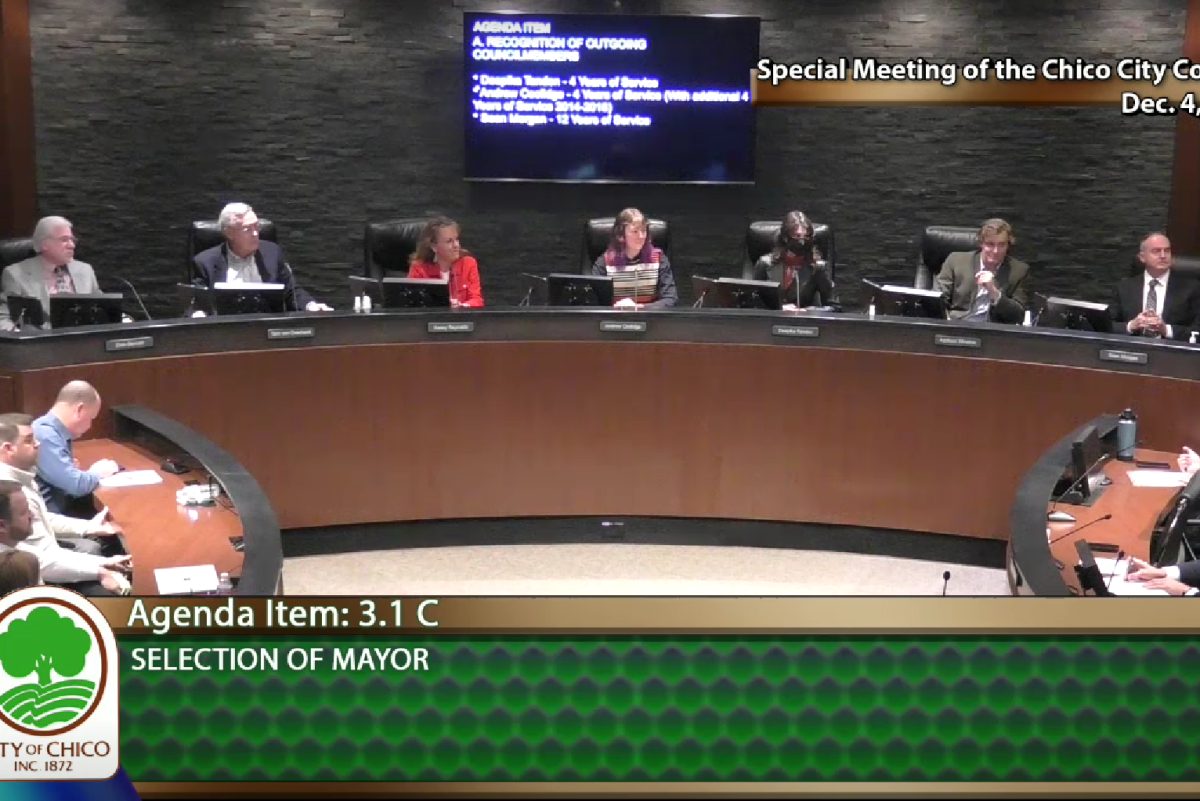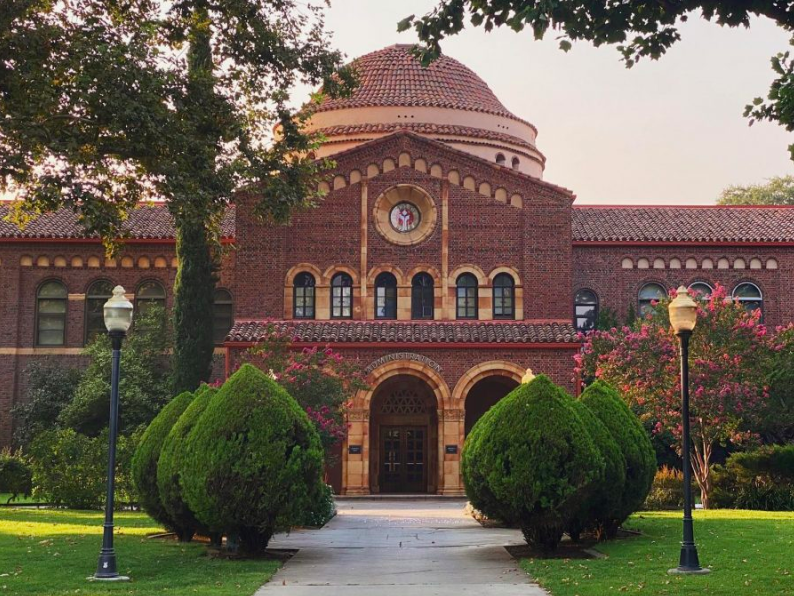
It’s easy to find it when walking or driving around Chico. On trash cans, fences, bridges, utility poles and abandoned buildings.
Street art, tagging and graffiti seems to be a dynamic part of any city. Some embrace it as an art form, while others consider it a blight to the beauty of a city, its homes and businesses.
Street art is usually more elaborate than gang-related graffiti, said Greg Keeney, Chico Police Gang Sergeant. Gang-related tags typically aim to stake territory or send a threatening message to a rival gang, rather than be a work of art.
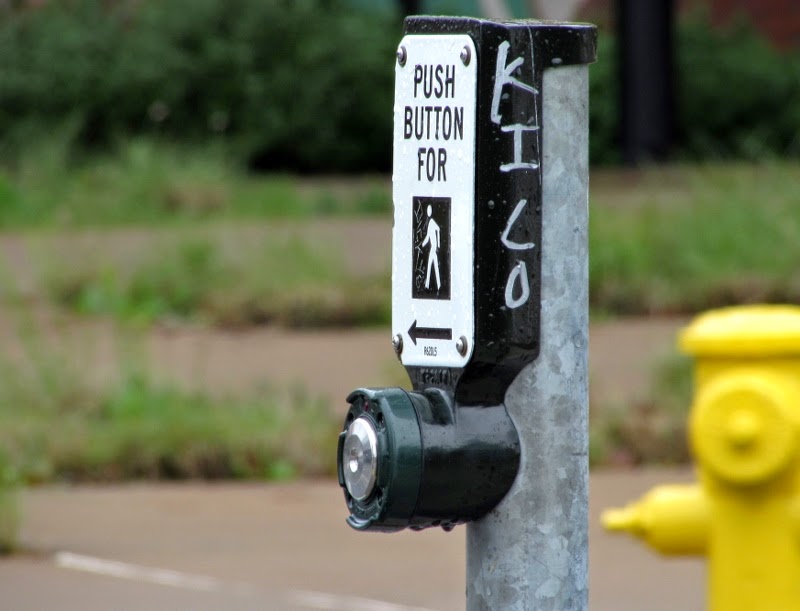
But not all less elaborate tags, like the one outside of Chico State’s Student Services Center on the corner of Ivy and West Second streets, are gang-related.
Kilo is just one tagger that has noticeably marked areas near Chico State, along with fellow tagger Azure. Both are not known to be affiliated with any gangs, Keeney said.

Azure has tagged bridges, fences and various other public structures on Chico State’s campus and surrounding areas, just like Kilo.
Azure is actually one of the taggers Michael Denofrio, one of only two Chico State Facilities Management and Services painters, has been cleaning up after for three years.
“We don’t go a week without doing graffiti. Sometimes it’s two to three times a week,” Denofrio said. “It just never gives up.”
FMS has spent roughly $23,000 on materials and labor for 173 work orders this year for graffiti clean up alone, said Kevin Doyle, interim director. He believes the graffiti takes away from the beauty of campus and is divisive in nature.
“From the students’ perspective, we’re behind,” he said. “It’s a challenge that faces pretty much all facilities departments everywhere.”
Other people on campus have a different perspective on tagging. Leah Overton, senior art education major, understands that most of the time it is vandalism on public or private property, she said. But she still finds that tagging is art because every tagger has his or her own style.
“They may not be tagging for a gang,” Overton said. “They may be tagging for an art crew or just for themselves, and they’re all different. It’s like an artist’s signature.”
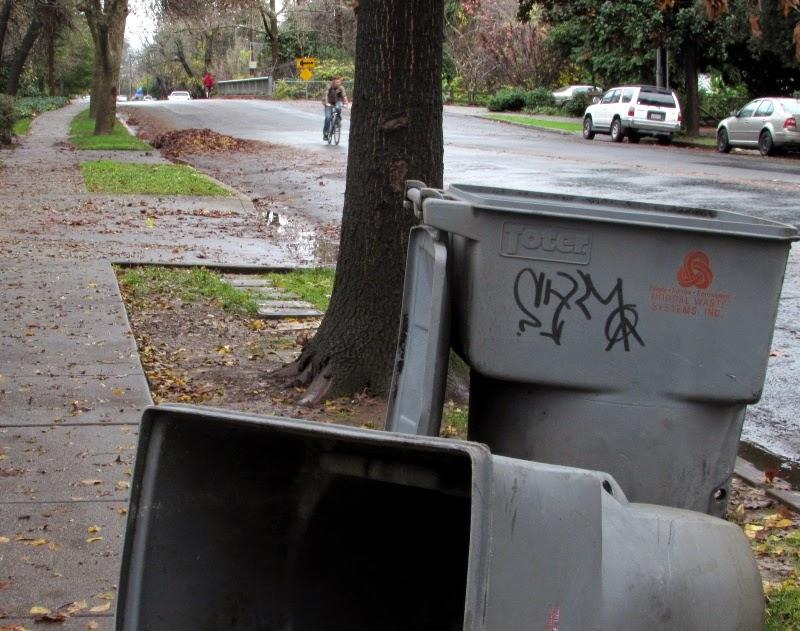
This trash can outside of the Shelton Oaks apartments on Ivy Street provides an example of a specific tagger’s style. Any positive symbols, like peace signs, also indicate that the tag is not gang-related, Keeney said.
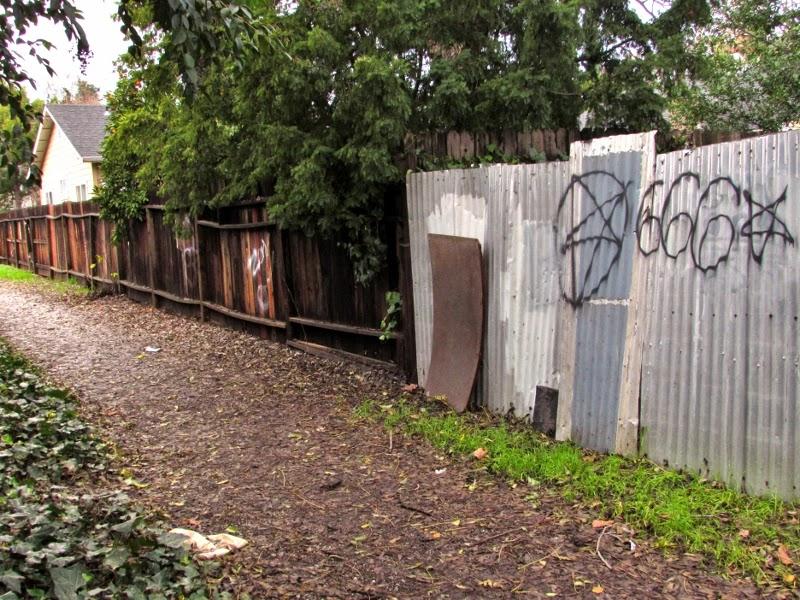
Some tags are not as easy to categorize as gang or non-gang related.
The “666” tag in the alley between the Pine Tree Apartments and surrounding homes sends a satanic message that may not be gang-affiliated but is still worth monitoring, Keeney said.
And it is these kind of messages in tags or graffiti that the City of Chico doesn’t want displayed for everyone to see.
Editor’s note: The “666” tag has now been painted over as of the date of this publication.
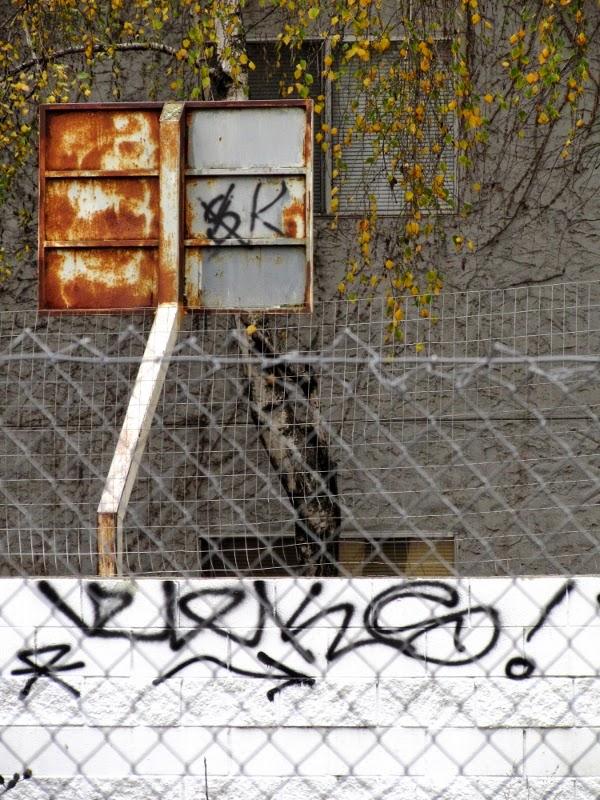
The city prioritizes gang and racially offensive graffiti and curse words when illegal tagging or art is discovered, said Troy Tacum, the city’s traffic safety supervisor.
“We do that because we don’t really feel like it’d be great to take your daughter or son down the street and see dirty words written all over stuff,” he said.
The “SK” or “Scrap Killas” tag on North Cedar Street, just above a non-gang related tag, is an example of a priority cleanup. It marks a territory claim made by a member of the Norteños gang.
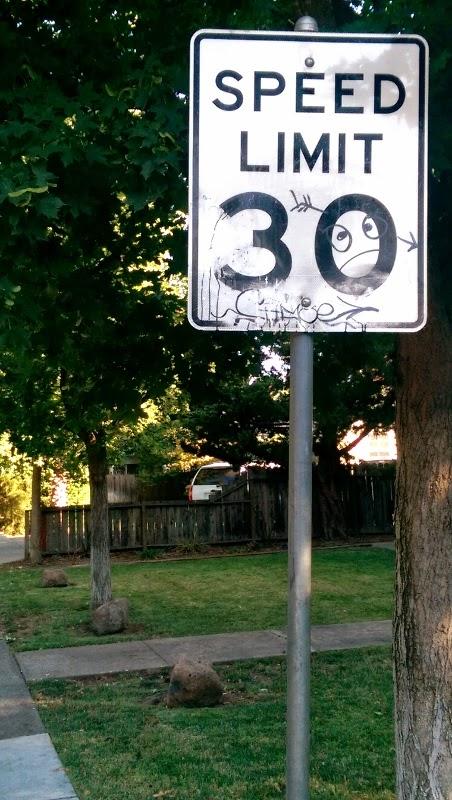
The rest of the graffiti, which is not offensive or gang-related, is added to a list and taken care of after the priority items. Tacum estimates that the city’s graffiti remover, Keith Lydon, cleans up graffiti or tags at 60 to 70 locations a day.
The speed limit sign on Ivy Street and West 11th Street has remained tagged since August.
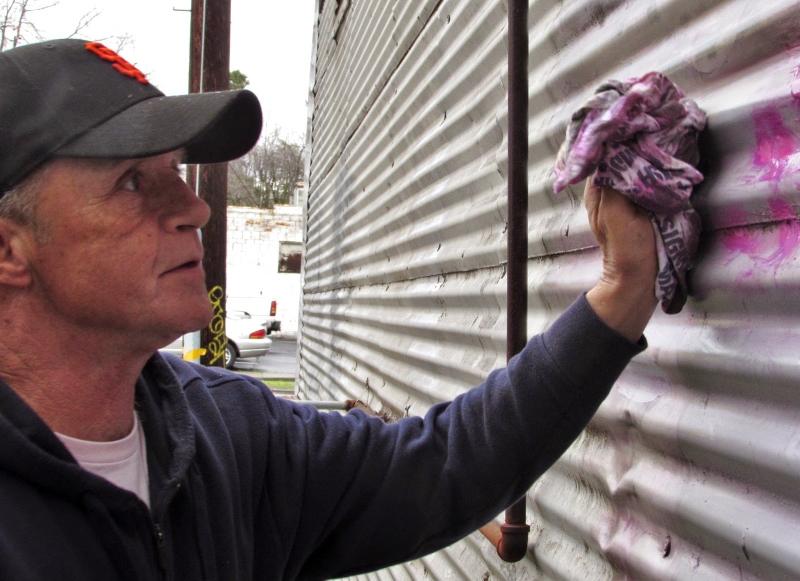
The city of Chico does help out private businesses and properties with graffiti cleanup free of charge as long as they have permission. But some businesses take graffiti clean up into their own hands.
On Dec. 19, Pete Bazzano was hard at work scrubbing off three different tags on the side of a Campos Properties warehouse on Cherry and Ivy streets.
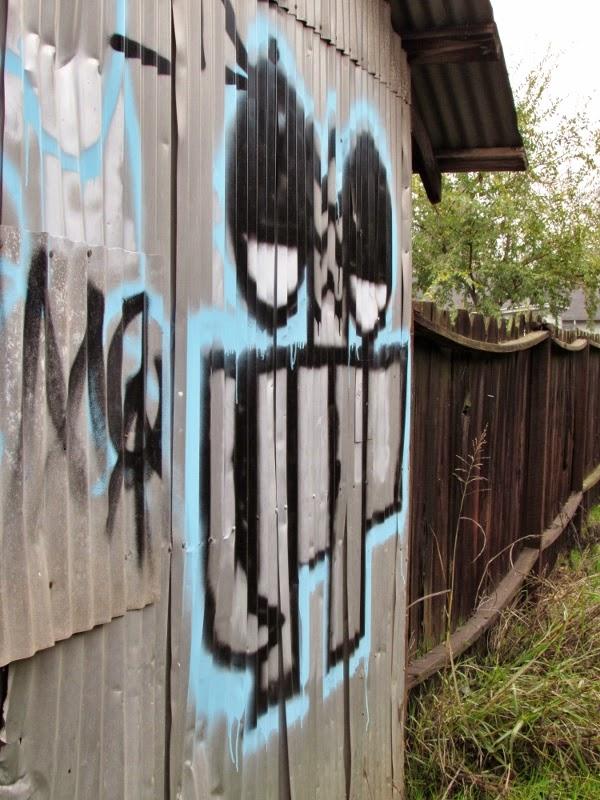
Jesse Campos, one of Campos Properties’ owners, said tagging is an issue for businesses because it is time and money. And Bazzano, the warehouse manager, knows this because he is often cleaning it off of the warehouse’s street walls.
“It takes away from the whole property and, eventually, makes (the neighborhood) look like a ghetto,” he said. “If you live some place, would you like somebody to come along and spray your fence or garage door?”
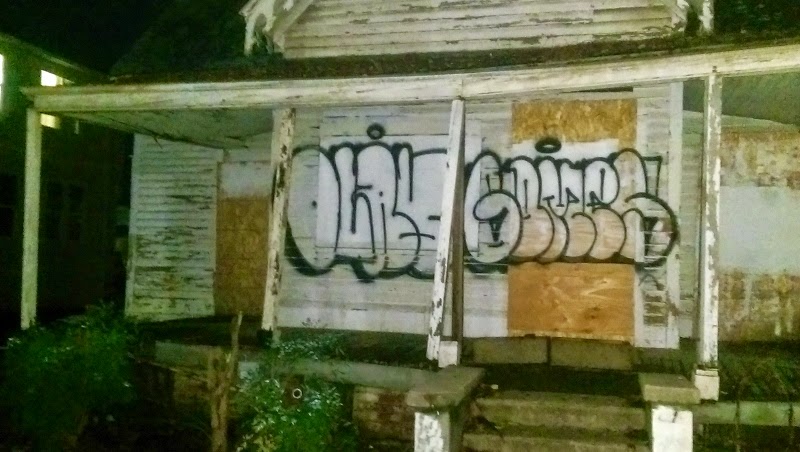
Graffiti appears to be both an art and a blight for communities, depending upon the perspective of the viewer and the intricacy or offensiveness of the piece.
Though graffiti is vandalism, more intricate pieces, like the one on Ivy and West Fifth streets, can transform the wall of an abandoned home into something more visually appealing.
Art and art history department Chair Robert Herhusky said he sees a lot of similarities between street art, graffiti, painting, drawing and tattoo art.
“Sometimes it’s poor execution,” he said, “but the ideas are good.”
Ashiah Scharaga can be reached at [email protected] or @AshiahD on Twitter.



